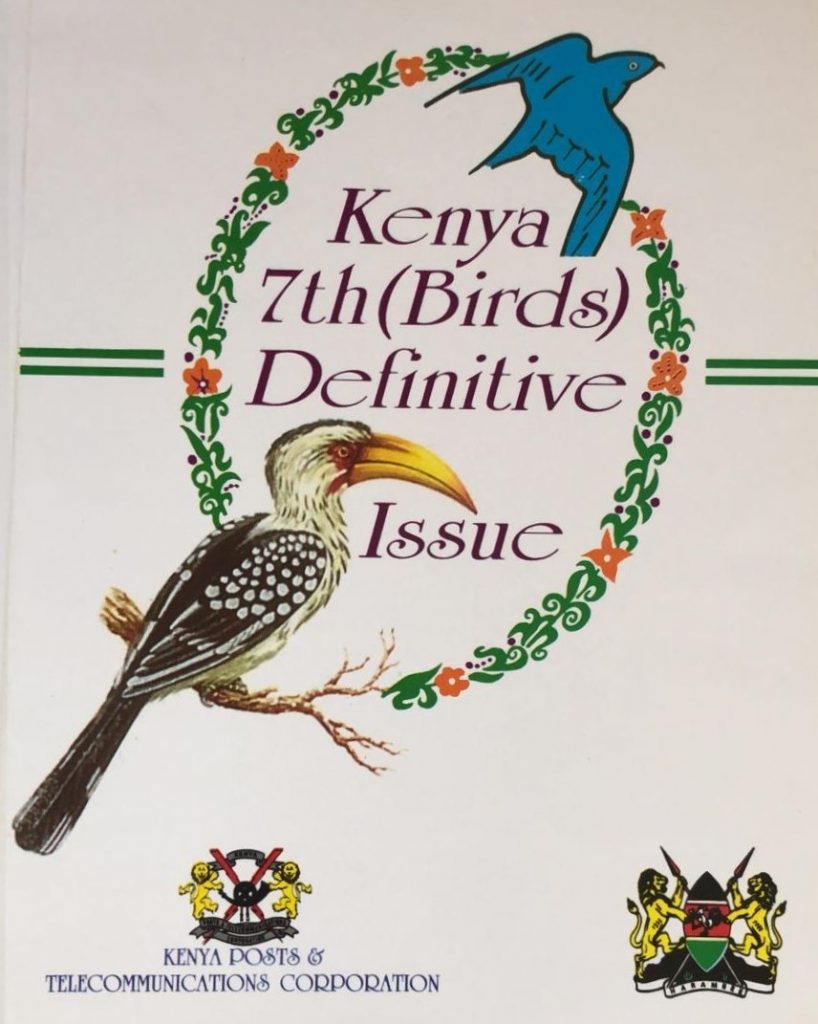
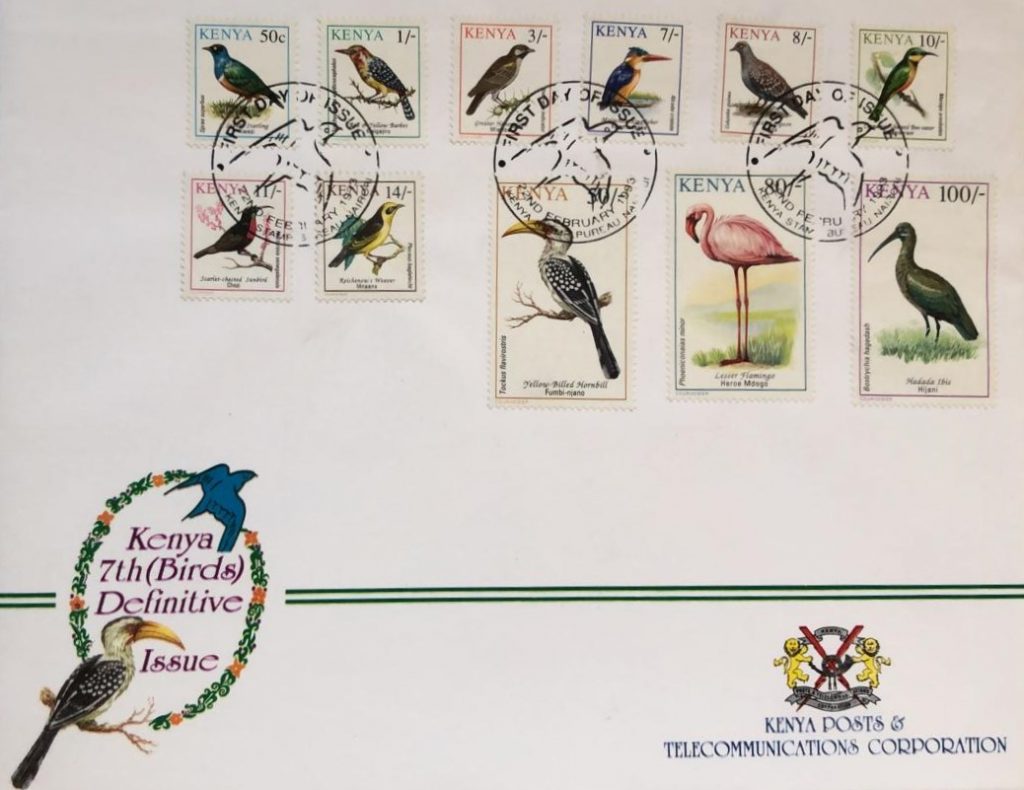
KENYA POSTS & TELECOMMUNICATIONS CORPORATION
The seventh issue of postage stamps for Kenya consists of eleven birds and replaces the butterfly edition that was issued on February 15, 1988. The new series depicts beautiful birds of Kenya. They were selected from the collection of the National Museums of Kenya courtesy of the Department of Ornithology.
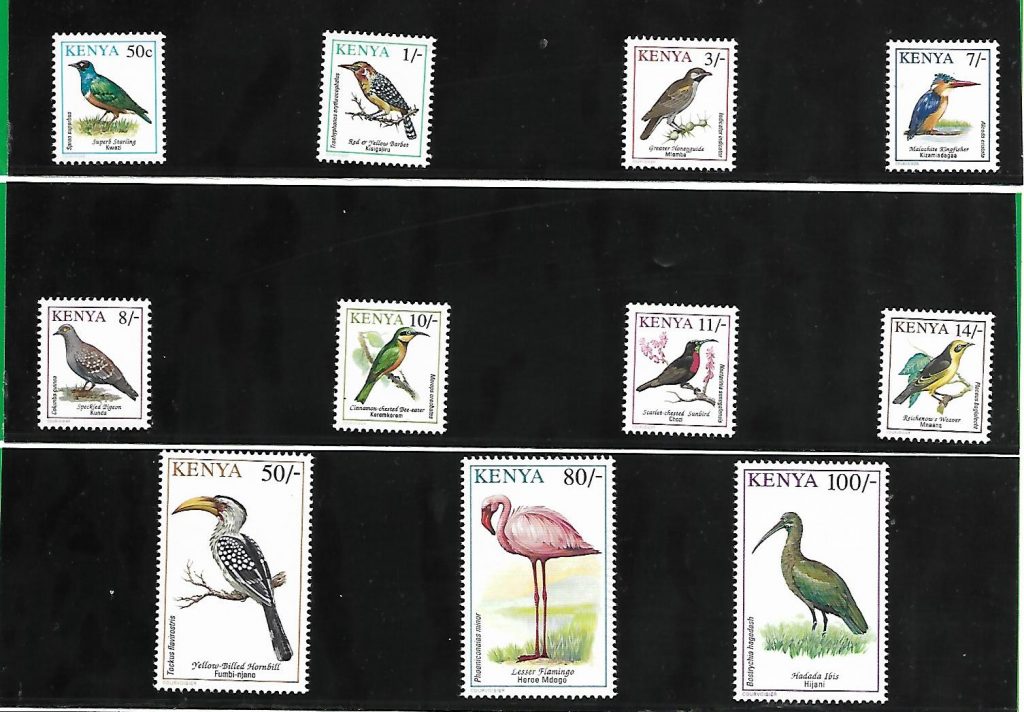
Technical details
Publication date: February 22, 1993
Designer: Mrs Deborah Buchman from Nairobi
Printer: of Switzerland Helio Courvoisier S.A.
Printing process: photo paper not watermark
Set: Cts /, 50 Shs 14 /,- 100 stamps in a sheet
Shs 50 /,- 100 Shs /-, 50 stamps in two windows of 25
Size: 24.13mm x 20.32mm 50Cts/,- 14 Shs/-,
100 Shs /, – 50 Shs / -, 27.94mm x 44.45mm
Color: Multicolor
Format: Vertical
Values:
Shs 10/-, Shs 11/-, Shs 14/-, Shs 50/-, Shs 80/-, Shs 100, , 50 Cts/-, Shs 3/-, Shs 7/-, 8Shs
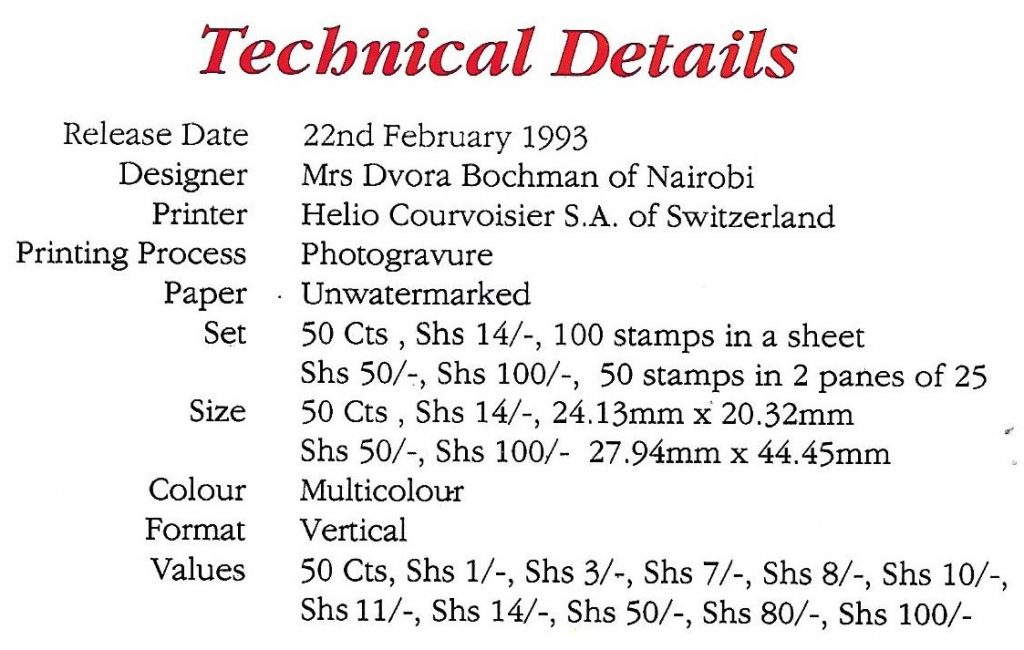
A whole page of stamps as sold in Kenyan post offices
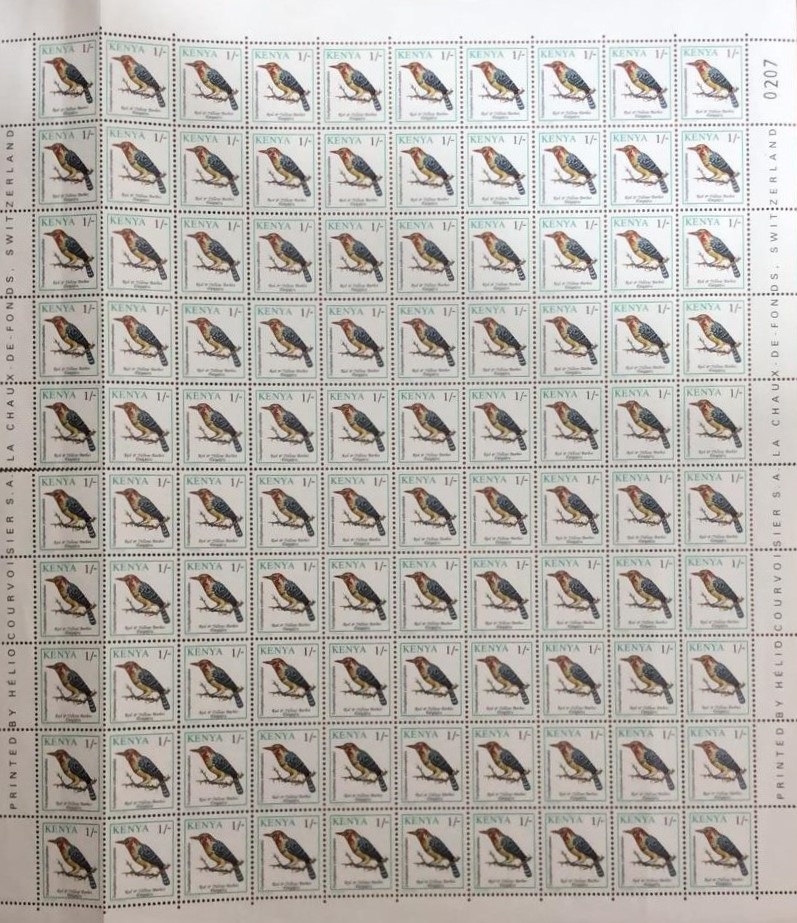
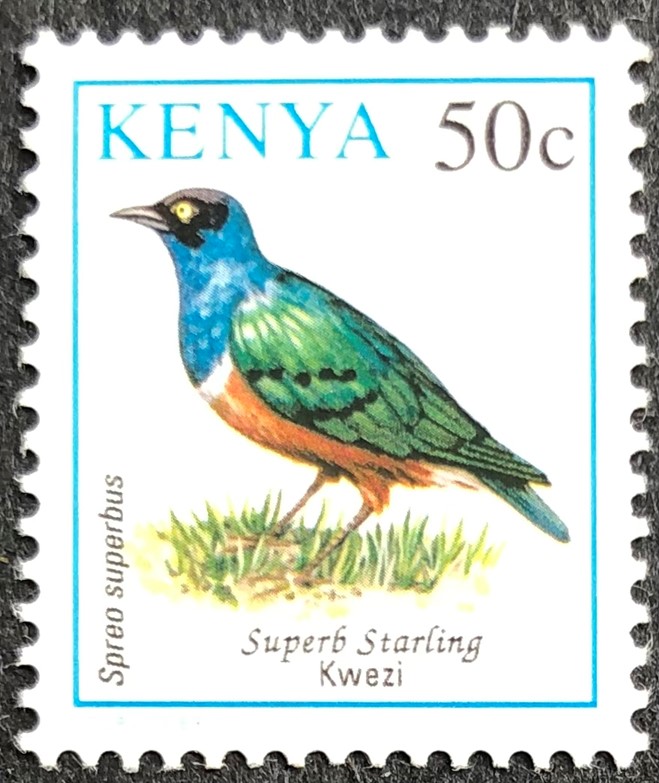
50 cents – the starling of the generation
Kwezi Spereo Superbus – Superb Starling
The starling is a beautiful bird. Its size is about 18 to 19 cm. Adults have a black head. Their back, tail, wings and the upper part of the chest are bright blue, while the color of the belly is brownish-orange. This part is separated from the blue chest by a white stripe. The area under the tail is also white. The color of The chicks are grayish-brown, and as they mature, their feathers become iridescent. Both sexes participate in building the nest, a hole that is found in trees or between rough branches of thorny twigs. Four eggs are laid in each litter, and incubation lasts 12 days.
The starling feeds on insects, molluscs and worms and fruits and seeds. In the vicinity of humans, the starlings have also learned to collect food scraps. They cause damage to agricultural crops when they appear in large flocks.

1 Kenyan shilling – red yellow ground barbet
Kisigajiru Trachyphonus Erythrocephalus Red and Yellow Barbet
Red Yellow Ground Barbet 1Ksh This beautiful and colorful bird excels in its colors: red-yellow. It has unique feathers that consist of black with mottled white, red and yellow. The bird has a black forehead and a crown with a light decoration. The nape is orange and red with black spots. The side of the neck is red and yellow. On the back side it is mostly black with white spots. The tail is dark brown with about eight square cream spots. The underside of the tail is yellow with black stripes. The chin and throat are yellow, and there is a black patch in the center of the throat. The throat is bordered with more orange areas. The chest is orange to red-orange and more yellow on the sides, with a dark stripe and white spots crossing the middle. The lower chest and abdomen are yellow. The wings are black and brown. The wing feathers have white spots, which give a mottled appearance. The beak is usually long and red. The skin around the eyes is dark gray or black, the eyes are colored: yellow brown, dark brown, red brown or a shade in between. The legs and feet are blue-grey. The female is similar to the male, but paler. Less red and orange, more yellow and white. Young birds are also duller and the eyes are usually grey.
The variety is found all over Kenya. It prefers dry bushes in indented areas such as stream channels and cliffs or termite mounds and avoids open areas. It nests in tunnels and feeds on or near the ground. Omnivorous, and feeds on seeds, fruits, termite insects and invertebrates. The barbet lives in small family groups. During the breeding season the young birds help their parents raise the chicks. His call is loud and loud.

3 Kenyan shillings – The honey bearer
MelembaIndicator Indicator Greater Honey Guide
The honey bee is especially found in an open and dry grove. The length of the owl is about 20 cm and it weighs about 50 grams. It has some white spots on the sides of its tail. In the male, the upper body is gray-brown and the lower part is white, with a black spot around the throat. There is a yellow spot on the shoulder The beak is pink. The female does not have a black spot around the throat, and its colors are duller. The cover is black. In young people, special colors: olive-brown upper body, white rump, and a yellow spot on the throat and the upper part of the abdomen.
The honey bee feeds mainly on foods that are directly related to honey bees: bee eggs, bee larvae and pupae, and beeswax (the bee is able to digest the beeswax). The wasp enters the hives in the morning, while the bees are still asleep, or feeds on abandoned hives. He joins other leaders during the raids on the hives. He became known as the leader of the honey badger by calling to a bee nest he found. After arriving he will make another call and the badger raids the nest and tempts the bees by spreading a scent, and they will feast on the food inside the hive. It is assumed that the behavior developed before the appearance of mankind.
There are also similar partnerships between the Avile and humans and baboons. The people of the tribe make special sounds that attract the leaders who lead them to the hive, and they tempt the bees with smoke. The honey bee also feeds on the eggs of small birds, flying insects, especially termites. It follows birds or mammals to find the insects they wash off in the water.
The aphid is known as a nest parasite. It lays 3-7 white eggs up to a total of 10-20 per year. Each egg is laid in a different nest of a different species of chicken, woodpeckers, kingfishers, wagtails, starlings and species of large siskins. The chick has a membranous claw on its beak, which helps it injure the chick of the “host” chicken until it dies.
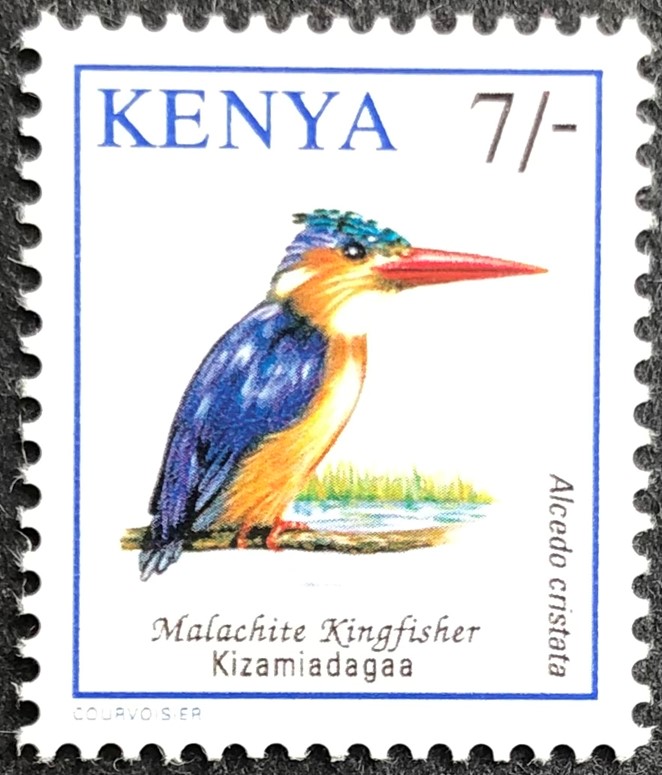
7 Kenyan shillings – malachite green kingfisher
Malachite Kingfisher Alcedo Cristata Kizamiadagaa
Malachite green kingfisher is common in Kenya, from the coast to the highlands and Lake Turkana. It is found among reeds and vegetation near water sources. A small kingfisher 13 cm long. The general color of the upper parts of the adult bird is a bright metallic blue. The head has a short tuft of black and blue feathers. The head, cheeks and underparts are rough and white spots are scattered on the front of the neck and on the back. The bill is black in young birds and orange Adults are reddish; legs are bright red. Males and females look the same, and the young are a duller version of the adult.
The kingfisher is characterized by its short and shrill calls. The kingfisher’s flight is fast and will usually fly low over water. Its short, rounded wings are so fast that they appear blurry in flight. It feeds on fish, marine insects and crustaceans. When fishing, his tail is pointed downwards. It drops suddenly and usually comes back up with the victim struggling. Small fish and insects are swallowed immediately. Others are thrown into the air before being swallowed upside down.
Nesting takes place in a burrow on a sandy bank, usually, though not always, and over water as both birds dig. Most burrows slope upwards before reaching the nesting chamber. There, three or four pairs of 3-6 round white eggs are laid on fish bones.

8 shillings buying – spotted pigeon or African rock pigeon
Kunda Columba Guinea Speckled Pigeon
The spotted pigeon is a common bird in Kenya. Its length is 41 cm. Its back and wings are dotted with white spots. The rest of its upper and lower parts are blue-gray, and its head is gray with red spots around the eye. The neck is brown with white stripes, and the legs are red.
The Spotted Pigeon can often be spotted around areas of human habitation and development. It feeds on plants such as grains or ground nuts. This species builds a large nest on rocks, cliffs or buildings suitable for nesting in urban areas: under the eaves of flat roofs and near gutters. There the female will lay two white eggs. The flight of the pigeon is fast and it will take off powerfully with a flutter of wings. Her voice is deep and hoarse.
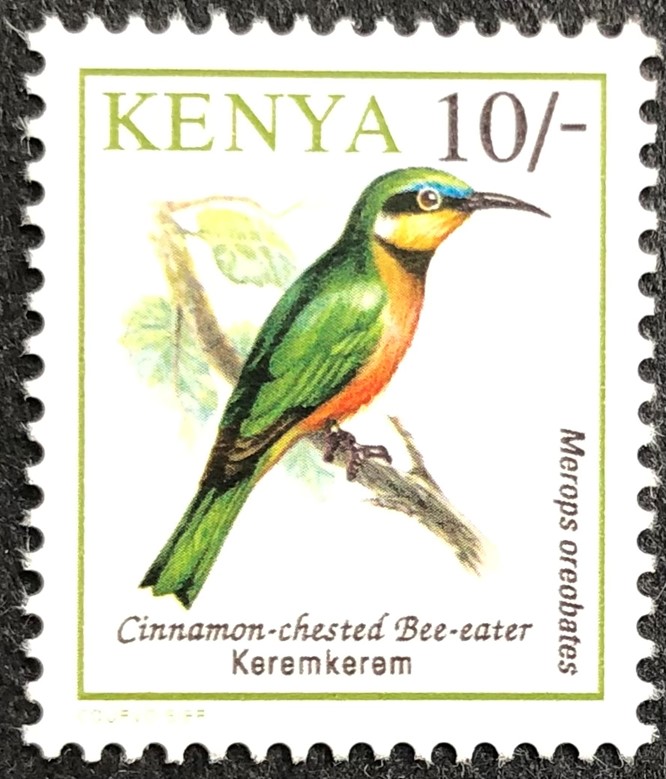
10 Kenyan shillings – bee eaters
Kerem Kerem Marops oreabates Cinnamon-chested bee-eaters
These birds live in forested areas of the Kenya Mountains, usually between 1,800 and 2,300 meters on forest edges, clearings, plantations and gardens. They can be seen on high telephone lines when they are in a group. The head, upper parts and tails are light green, chin and throat are yellow and tipped with black, with a white extension on the side. The chest is cinnamon brown and gets lighter towards the belly. The tail is black with an orange base and a white tip when viewed from the front, while the back is mostly green, with black tips visible in flight. They are 22 cm long and weigh 17-38 grams.
Their screams are unique and betray their presence. They eat bees and other poisonous insects. Before they swallow a bee or wasp, hit it hard against their beak to dislodge the stinger. They also eat moths, butterflies, dragonflies, beetles and other flying insects. Their position is upright with the tail pointing down. They wave their tails and fly in a wide and graceful arc towards a flying insect. The male and female of the bee-eaters are similar. Two or three white eggs are laid in a long tunnel dug in soft soil. They were declared as birds for conservation due to the depletion of the forests.
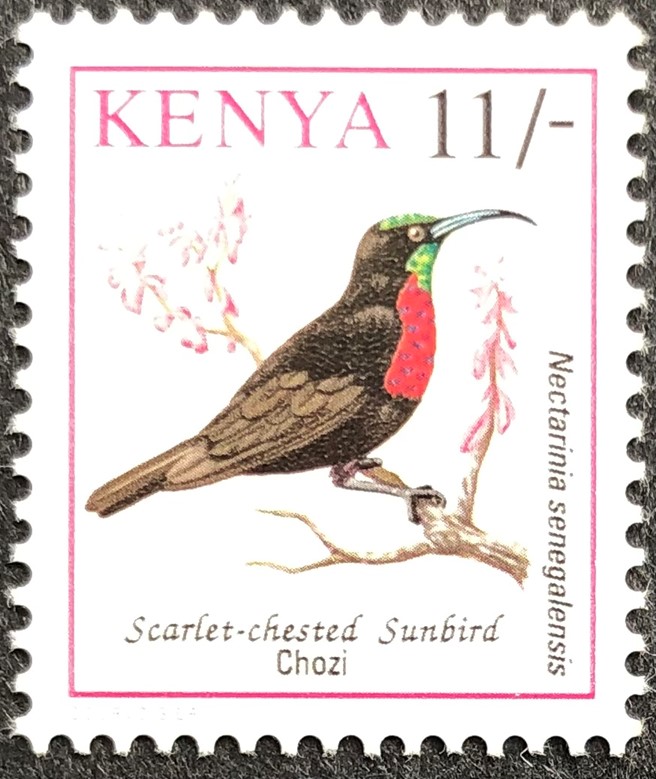
11 Kenyan shillings – red-breasted black scout
Scarlet-Chested Sunbird Chalcomitra senegalensis Chozi
A small and beautiful songbird common in Kenya, especially in high rainfall areas. The male is impressive with his chest in the second color, his head and neck in a turquoise green color, his black body and the long, curved and thin beak. The female is a pale and dull colored bird.
Like other scouts, this species moves from flower to flower and feeds on nectar, nibbling with its beak and long tongue. Insects are also used as part of its diet. The scout builds a nest from downy seeds, cobwebs, roots and similar materials. The raw materials are expertly woven together to form a beautifully crafted hanging nest, where a small entrance leads to a densely covered chamber.
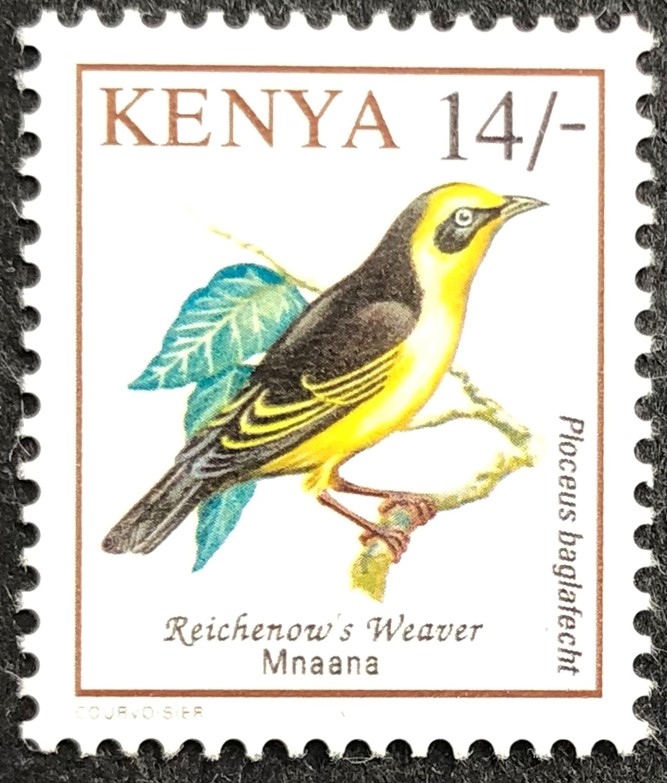
14 Kenyan shillings – a weaver in Glapacht Flokaus
Reichenow’s Weaver Ploceus Ploceus baglafecht Mnaana
Glaphacht Weaver Flocaus is an attractive and lively subspecies of the weaver. It is 15 cm long. The adult male has a black mask that stretches from the beak through the eye to the ears and contrasts with the color of the forehead, the front of the head and the bright yellow throat. The wings are distinguished by black feathers and the tips are yellow and form yellow striped patterns. The tail is yellow and dark brown. The beak is black and the eyes are yellowish. Both sexes colored but the female differs from the male in that she has a black crown.On the head of the chicks and the young birds there is a dark mask.
The bird is widespread and known in the highlands of Kenya in forests, on the edges of the forest, in gardens and in towns. It is often aggressive towards other birds but is not afraid of people. Usually seen as a family pair and nesting individually rather than in colonies. The nest is made of green grass, carefully woven and placed and usually placed in the foliage of trees or bushes
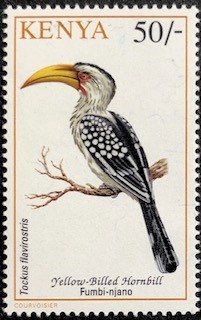
50 Kenyan shillings – Yellow-beaked Tokus
Yellow billed Hornbill Tockus Flavirostris Fumbi-njano
A medium-sized species found in dry areas in the big bushes in eastern and northern Kenya. These birds feed mainly on large insects but also fruits, lizards and even eggs and chicks of other birds. They have amazing nesting habits; The female digs a deep hole in a tree trunk. Now she begins to close the entrance to the nest space with a wall made of mud, dung and fruit pulp. The remaining opening is narrow and allows the male to pass food to the mother who lays and incubates about four eggs, and later to the chicks that hatch from the eggs. This behavior is probably related to the protection of the nesting site from rival birds. At the end of the process, she breaks out of the mud prison and helps her partner feed the growing chicks. When ready to fly, the young birds hatch one by one in order of size, and the entrance is carefully closed each time.

80 Kenyan shillings – Junior Flamingo
Lesser Flamingo Phoeniconaias Minor Heroe Mdogo
The lesser flamingo is one of Kenya’s most famous birds. The variety is the smallest in the world and excels in its elegant appearance. The legs are red with swimming membranes, and the red neck is graceful and long, the beak is very dark, long and has an unusual and distinct shape. The feathers are soft pink. The flamingo usually stands on one leg and folds the other to keep its body warm. The species is found in alkaline lakes such as Lake Magadi, Elementite, Nkuru and Bogoria. Its length is 80 to 90 cm, its wingspan is from 90 to 105 cm, and its weight is 1.2 to 2.7 kg.
Sometimes more than a million birds will gather in a flock to find food while stirring the bottom of the lake in order to raise food from it.
The flamingo feeds on plankton, shrimp and microscopic blue-green algae found in the water, which contain beta-carotene which gives it its reddish-pink color. The source has a structure used to pump water, leaving the algae stuck on fine bony filters. The breed is very mobile and moves between feeding sites as conditions change. They migrate mainly at night, and their loud calls can be heard when the birds are in flight.
The flamingo’s nest was built by both couples and is an enlarged mound in the shape of an alkaline (alkaline) mud crater. The female lays one white egg and both parents will incubate the egg for 21-26 days.

100 Kenyan shillings – Magellan of the Savannah
Hadada Ibis Bostrychia hagedash Hijani
The savannah magellan of the pelican family is a common bird throughout Kenya. The most distinctive characteristic of the Magellan is his call, “Ha-da-daa, ha-daa-daa”. This is mainly heard in the early morning and late evening hours on the way to and from the feeding area. There is no doubt that this is one of the typical sounds in many regions. It is about 76 cm long. The male and female are gray. The feathers above the wings have a bright purple sheen produced by optical microstructures within the feathers. The bird has black legs. It has a horizontal white stripe on its cheeks called a “whisker”. The upper surfaces of the fingers They are red when breeding begins.The wings are strong and broad and allow easy and quick maneuvering through a dense tree landscape.
It lives in flocks on trees in places where the ground is moist and soft and the grass is muddy: at the edges of swamps, lakes and rivers which are suitable for living and breeding. But it can be seen in meadows in moist areas near trees away from water, in garden beds around residences, the bird is especially welcome on golf courses because it feeds on the larvae of moths and beetles that destroy the grass roots. The magellan will use its long rounded beak to dig through the mud for insects, snails, worms and other invertebrates.
The bird is monogamous and maintains a relationship throughout the year. Breeding begins after the rains. The nest is a large and untidy platform of twigs that is placed between central branches of a large tree, both parents take part in the incubation of a pair of up to four eggs. Incubation lasts about 26 days, and the parents feed the young.
The Kenyan post office’s request to design the seventh issue of Kenyan stamps made the artist very happy. The stamp series was to replace a wonderful series of butterfly stamps. The artist’s previous stamp series were produced in a style that created harmony with her works outside the philatelic world and excelled in lightness and informativeness. Now the possibility of corresponding with the local naive style was considered to some extent. Stamps in this style have been designed and several examples are shown here.
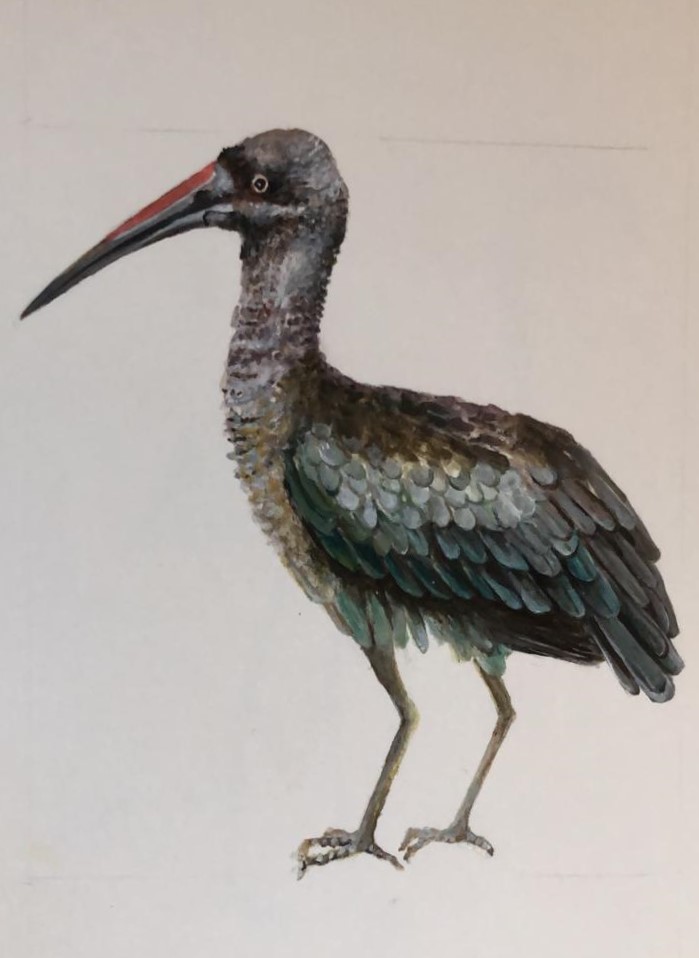
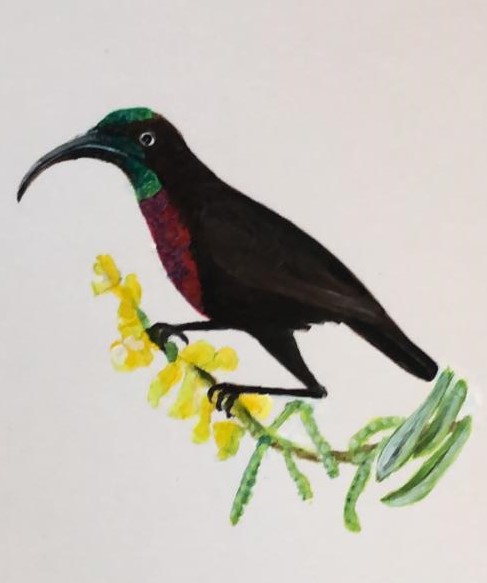
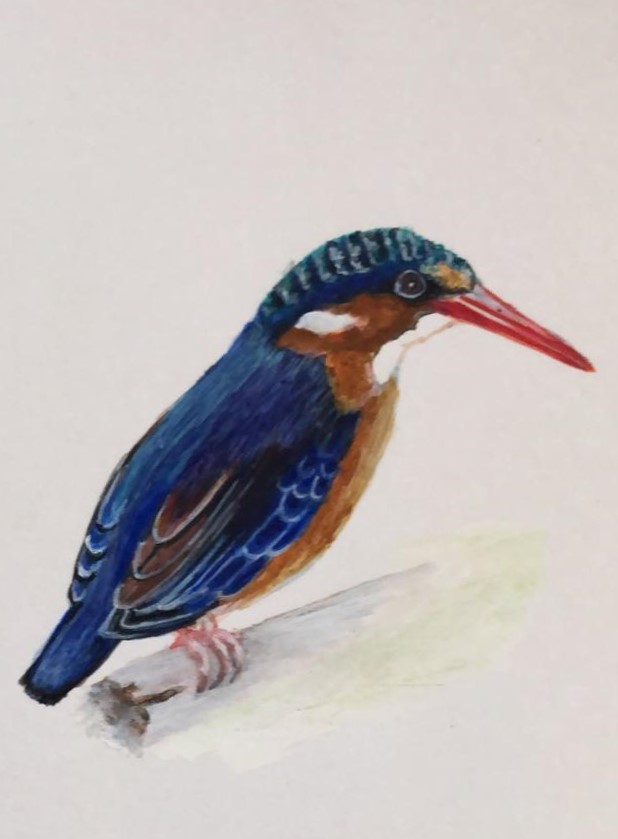

The conversation with the chairwoman of the Kenyan ornithological organization and the many efforts invested with the university, and the research conducted in order to make accurate information related to each bird in English and Kiswahili on the one hand and the Latin in which the names were changed during the process of preparing the edition on the other – reduced the freedom of style to a more informative direction according to which the mushroom series was designed.
Letters from the extensive and serious correspondence that accompanied the production

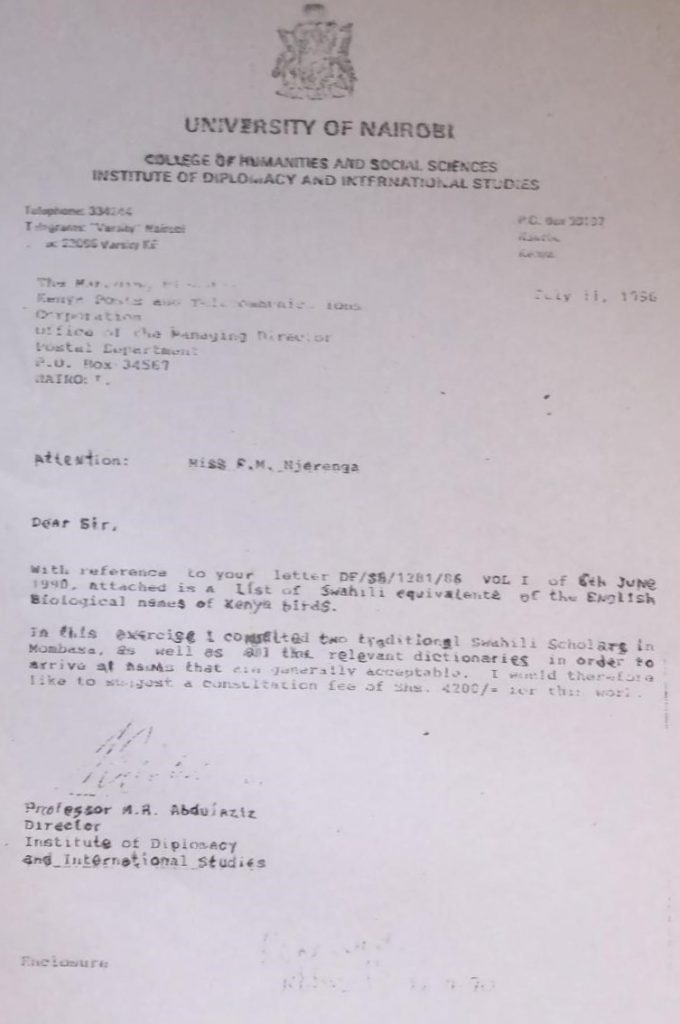

There was also direct talk with a scientist who had returned from research in the desert about the wonderful bird: indicator indicator. He told the artist about his diet and the cooperation between the bird and man. Therefore, even though the bird is small in size – it was drawn a large peat dedicated to large birds – due to the new research and a small peat – due to the size of the bird. The big design is rejected and attached here for your enjoyment!

The inscription is made on a separate page and can be changed according to the decision of the Ministry of Communications
The design of this stamp was very elaborate and the artist likes to look at it and remember it. Although she designed 14 stamps, only eleven stamps were produced in the first edition. The other stamps were added later.
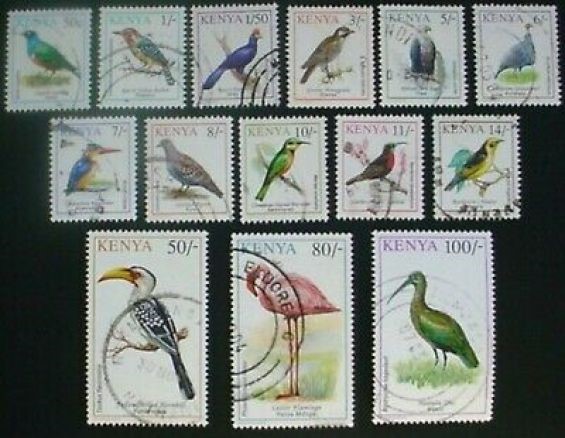
The edition was printed after honor in Switzerland known for its precise watches. However, like the Americans who contributed to the purchase of yellow corn during the famine and did not find out that the purchase needed corn of the white variety. They remained hungry and those who planted the yellow variety caused the crops to undergo genetic changes that worsened the situation. The Swiss made slight changes in the design of the stamps in the direction of the graphic designer. On the other hand, the artist was not asked to analyze or explain the reason for the design she adopted, which was slightly different in appearance, but was created in symbiosis with the African art that the artist learned to appreciate during her stay in Africa. Compromise is not her characteristic, but she really didn’t want to upset everyone who was involved and tried so hard.
The years passed and Dvora also became a curator who is also interested in topics beyond her works. Today when she goes back and reflects on the changes made to the stamps and the apologetic look of the PA representative, her thoughts capture the name: “Edward Said” and his book “Orientalism” published in 1978. There he discusses the clichés of the concept that dominates Western culture that feels superior in the discourse of Western nations with non-Western nations . The supremacy of the discourse became a powerful political tool of control that created a difference of cultural inequality when the cultural representations define the West as rational, strong and masculine, but at the end of the process the “other” accepts the order and follows it.


